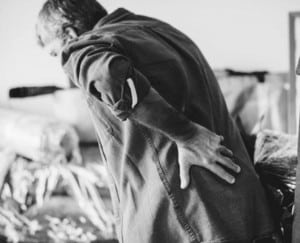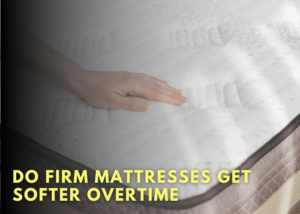We hope you love the product we recommend! Just so you know, at no extra cost to you, we may get a small commission for purchases made through links in this post. Your support is appreciated. Enjoy the read!
I thought sciatica was just something my grandma talked about.
A pain in her butt
…and for the longest time, I thought she was referring to me!
But did you know that people of all ages can have sciatica?
So, at what point is sciatica a disability?
What is Sciatica: Do You Have It?
Ever felt like an electric shock went down your thigh?
That could be your sciatic nerve flaring up.
It’s not a medical diagnosis, but a name describe any pain linked to the sciatic nerve, which is a symptom of an underlying medical condition.
So, where is this nerve we keep mentioning?
The sciatic nerve is the longest nerve in the human body and is as thick as your finger (2~ cm).
The nerve begins at the lower back, goes through the bum, down the back of each leg, and runs all the way to big toes.
Basically, half your body.
 It’s pretty easy to compress this nerve and feel pain – that’s why 40% of people will experience sciatica.
It’s pretty easy to compress this nerve and feel pain – that’s why 40% of people will experience sciatica.
It’s often confused with back pain and is one of the most common yet misunderstood types of pain.
Chances are you’ve had sciatica before!
In mild cases, it goes away on its own with time and rest. 50% of people recover within 6 weeks.
If the pain persists, go see your doctor for diagnosis and treatment.
Sciatica Symptoms
Sciatica usually affects only one side of your body. If both sides have pain, it’s probably something different.
Along your lower back, through your bum and back of the legs, to your big toe, do you experience:
- Shooting or burning pain – either once in a while or constantly?
- Pins-and-needles tingling sensation?
- Electric shock down the nerve?
- Numbness?
- Dull soreness or ache?
- Muscle weakness?
Do you notice it worsening when you:
- Suddenly move?
- Sneeze or cough?
- Try to sit down or squat?
If you have most of the symptoms above, then you might have sciatic pain.
Time to book an appointment with your health professional to get it checked out!
What Causes Sciatica?
Any compression on the sciatic nerve is what causes the pain. Here are a few common reasons.

1. Slipped Disc
Also called a Herniated Disc, this is the most common cause of sciatica.
First, let’s talk about the spine.
The spine is made of bones stacked on top of each other with a disc of soft tissue in-between each layer.
These discs act as shock absorbers and is what lets you move around with ease.
Your body is protected from any impact, which includes the smallest of movements, like walking or sitting.
Now imagine a soft cushion of tissue between the spine pushing out.
Doesn’t look or feel good, does it?
Everything is out of alignment. You may feel pain, have trouble bending your back or have limited movement.
2. Spinal Stenosis
Although you can be born with this narrowing-of-the-spine disease, spinal stenosis usually affect adults 30-50 years old.
As you age, so does your body, which includes your bones, muscles and connective tissues.
If you repeatedly do one activity for too long that degenerates your spine (like sitting, standing or walking!), it can lead to spinal stenosis.
Stenosis is the narrowing of the part of your spine where the nerve passes through. The most affected areas are in the neck or lower back.
This is why it’s important to be ergonomic with your work station. Sitting IS the new smoking.
Remember to take a quick stretch break [insert jump link] every hour or so. Especially If you feel any pain. Taking a little time and be gentle with your body.
As they say, you’re as young as your spine!
3. Spondylolisthesis
It’s when one of the vertebrate (bone) in your spine slips out of place.
Ouch, it sounds way worse than a slipped disc.
When this happens, the disc slips over another and the displacement causes compression on the nerve, which shows up as leg pain.
Spondylolisthesis is the result of spinal degeneration, trauma or physical stress, but can also be discovered at birth.
It can further progress during childhood and continue into adulthood, so it’s important to go to your regular check-ups.
You can even make a day of it and take your entire family with you!
4. Physical Trauma

We all know someone who got into an accident and their body was never the same again.
I mean, there are thousands of pro athletes career-ending injuries every year.
Just look at Basketball Star Yao Ming, Hockey Player Sid “The Kid” Crosby and Football Running Back David Wilson.
A car accident, a sporting injury or even high-impact falling could result in severe damage of the sciatic nerve.
So remember to be safe, use good judgement and take care of yourself (and others).
5. Can Constipation Cause Sciatica?
Embarrassingly, yes – I sh*t you not!
How so?
Well, your waste is building up inside your bowels. Eventually, it can get to a size where it compresses into your nerve. True story!
Cause of action? Look at your diet.
Drink more water and pack in some extra veggies, blend and sneak them in if you’ve got to. A fiber-infused diet will keep the pipes running smoothly.
Where’s the prune juice at? If it’s severe, it may be time to take a gentle, overnight laxative.
Sciatica vs Piriformis (Pseudo Sciatica)
Both conditions are similar but the difference is where the pain is located.
Knowing the difference can help you take back control of your own body.
What is Piriformis AKA Pseudo Sciatica?
Have you ever wondered what that deep pain in your butt was?
That’s probably your piriformis muscle.
It’s deep inside the bum, behind the gluteus maximus, and close to the sciatic nerve. That’s why the two often get mixed up, but now you know the difference.
Keep in mind that piriformis inflammation can compress the sciatic nerve around the bum and hips.
It can start with pain, tingling or numbness and can grow into:
- Difficulty or pain sitting down, climbing stairs, moving your hips
- Difficulty putting weight onto one side of the buttock
- Muscle spasms
If you’re unsure, it’s best to seek professional advice from a healthcare provider.
Are You at Risk for Sciatica?
That really depends on you and your lifestyle habits.
If you’re someone who regularly stays active, eats healthy and practices good habits, then the risk goes down.
Other than lifestyle, here are some factors to consider:
1. Age
If you’re in your 40s and 50s, there’s a higher risk of sciatica developing, but it can hit at any age. So young bucks, beware and take care.
2. Occupation
 Do you do a lot of heavy lifting? How about standing or sitting for hours on end?
Do you do a lot of heavy lifting? How about standing or sitting for hours on end?
Too much of one thing is never good.
Constant pulling, pushing, bending and twisting can cause havoc on your hips and lower back.
Standing with knees locked or putting all your weight onto one side puts pressure on the nerve.
Even a nice, cushy office job is something to look out for. That stagnation along with a sedentary lifestyle can lead to some serious issues.
Stand up and shake it out right now!
Better yet check out the exercises below that you can do at your desk.
3. Pre-Existing Medical Condition
If you have spinal degeneration, diabetes or got into a back-altering accident, your risk is pretty high.
When is Sciatica a Disability? Can I Claim Disability Benefits?
According to Americans with Disabilities Act (ADA), disability is defined as “a person who has a physical or mental impairment that substantially limits one or more major life activity.”
Depending on the severity of your sciatica, you may be eligible for Social Security Disability Benefits, but it’s difficult to classify sciatica as a disability.
Unless you can pinpoint crippling pain to the sciatic nerve or have other impairing conditions. Why? Because it can generally be treated and the symptoms get better with time.
According to Disability Secrets, a medical evaluation from your doctor is needed to prove that your condition is so severe that you can no longer work.
How to Manage Sciatica Yourself
With enough rest, the pain usually gets better within 6 weeks.
But what if it doesn’t?!
You probably don’t want to be drugged up on painkillers all the time, so what are some long-term solutions to manage sciatic pain?
Consider a combination of self-care measures and medical treatment.
The best things to do to get better:
- Carry on with your normal daily activities as much as you can
- Stretch out your back regularly
- Take some painkillers when you need to – ask your local pharmacist
- Apply heat and cold packs when appropriate
- Go get a massage
- Do some gentle exercises – it can be anything to get you moving
The worst thing you can do is stay in one position for too long (30+ minutes). You need to move!
It’s time to pay your Doctor a visit if the pain hasn’t improved, got worse or stops you from doing normal, everyday activities.
Hot & Cold: When to Use What?
I’m sure you’ve been told to put some ice or heat on a sore muscle or an injury before.
That’s because it gets the blood flowing to these areas to lessen pain and inflammation.
But do you know when to apply which one?
That’s the tricky part!
Here’s a guideline though.
 Heat Therapy
Heat Therapy
Apply heat 10-20 minutes BEFORE an activity to warm up your muscles.
Remember to use a heat pad that slowly warms up instead of a hot water bottle, so you don’t accidentally burn yourself.
You can easily put on a heat pack when you’re watching Netflix, reading an e-book or doing some work on your laptop.
It’s best to schedule in some stretch breaks after putting on the heat every so often though.
Cool Therapy
If the pain increased AFTER an activity, reach for an ice pack to cool down that inflammation right away.
That’s why when there’s any swelling, people tell you to put some ice on it.
Inflammation is a friend of pain, so freeze those flare ups!
If you’re on-the-go, opt for some portable, adhesive hot or cold packs or a back wrap.
A back wrap literally wraps around to give your back gentle support and therapeutic compression. More importantly, it holds the heat or cold inserts without them slipping down your pants!
Self or Partner Massage
Everyone needs a little TLC once in a while.
Taking care of and putting everyone above yourself all the time is tough. You deserve some self-pampering!
Go ahead and break out the candles, relaxing music and a glass of wine. Fill up that tub with hot water and sprinkle in some epsom salt.
After you’re warm and toasty from your soak, you can give yourself a foot or leg massage.
Better yet, get your partner to do it for you!
This way they can get to those hard-to-reach places, like your lower back and hips.
It’s all about improving that blood circulation, reducing pain and helping you heal.
Exercises for Sciatica
Staying active is always a good thing!
Fitness can improve your general health, flexibility and mood among other important things.
But the last thing you want is pain to flare up without warning and put a stop to your day.
So, get the green light from your doctor first before diving into these exercises.
1. Running with Sciatic Pain
I love running!
But running with sciatica? I was skeptical.
Although running doesn’t cause sciatica, you use a lot of your lower body, which is usually affected by sciatica.
On top of that, the bouncing motion and impact from hitting the ground could cause aggravation in your back, legs and feet
With that said, running has great benefits! It can help you
- Lose weight
- Relax tight muscles
- Strengthen your back and abs
- Up your cardio game
- Ease back into an exercise regime, since it’s suited for all ages and every level of fitness
If you’re a runner and live with sciatica, remember to stretch first!
It’s a great way to warm up, you’d be more limber and should recover faster too.
Here’s a quick 7-minute pre-run stretch for you. It takes me the same amount of time to find my sneakers.
Talking about sneakers, how are yours holding up?
How you run and how supportive your shoes are have a greater effect of your sciatica than you think!
If you’re able to, custom-fit is ideal. Otherwise, look for shoes with built-in shock absorber.
Or how about no shoes at all? That’s right – barefoot over grass or a sandy beach!
Start slow, your tender toes may not have touched the bare earth since who knows when. It’s a liberating feeling 🙂
2. Walk if You Can’t Run
Even a low-impact exercise, like walking, can help relieve inflammation.
Try going on 30-minute brisk walks 3-4x a week.
If a half hour is too much, that’s fine – everyone is different. Start with just 5 minutes and slowly build up from there.
I’m not trying to tell you how to walk, but make sure you have good walking posture though.
Stand up straight. Your ears should be parallel your relaxed shoulders. Engage your core – that’s both your abdominal and lower-back muscles – as you move.
I like to take a stroll with my coffee in the morning when the weather is nice. Fresh air and fresh coffee keeps me alive!
Maybe you rather take a walk after dinner with your family to the local park.
It doesn’t matter what time during the day, the key is to actually do it.

3. Yoga for Sciatica
Ah, yoga!
An ancient east indian spiritual practice and one of my favorite things to do.
There are so many to choose from, so which one is right for you?
I’d suggest you to look into the different types and drop by your local studio to chat with the instructor. See what they recommend.
Typically, you’d want to pick one that is more gentle and supportive, so it can help you make a faster recovery.
My top three picks are: Yin Yoga, Bikram Yoga and B.K.S. Iyengar Yoga.
Yoga can also act as a gateway to ease you back into more physical activity.
Don’t worry about spending money on classes if you just want something simple to start off with.
There are so many good resources online for self-guided yoga, like this one:
4. Pilates for Sciatica
Did you know that this was one of hollywood’s best kept secrets to get in shape fast?!
Of course, that was decades ago. It’s hit mainstream for years ago.
Pronounced ‘Pi-La-Tees’, I’m also a big fan and try to work this into my exercise regime.
Originally popular with the dance community, German-born Joseph Pilates designed this system of exercise to target that core.
Why?
Because core strength = core stability = proper support for your spine.
Not only is pilates a low-impact, gentle exercise, but it also helps:
- Reduce risk of injury
- Build strength, stability and flexibility
- Release muscle tension
- Strengthen core muscles
- Help you look taller by elongating your muscles
Same with yoga, no need to take a class. There are plenty of free, online classes to check out first to see if you like it or not.
5. Sciatica Exercises At Work
If you sit all day, change it up!
Make sure you’re taking breaks at regular intervals (every 30 minutes) to stretch out.
Try walking over to your coworker’s desk instead of sending an email. Go to the kitchen and refill your cup of water. Or maybe a little Cha Cha Slide to liven up the working day!
If you’re stuck in one place or if you work remotely, do some walking lunges or squats or just walk in one spot.
When you’re sitting down, remember not to cross your legs or slouch, and always engage your core muscles.
Ask your company if they can give you an ergonomic assessment and set up your desk properly.
This may include a supportive, adjustable chair or a stability ball, positioning your monitor(s) at eye level and maybe (if they’re generous) a standing desk.
You might want to look into a seat cushion for extra back support too. Whatever makes you feel more comfortable.
Treatment for Sciatica
Besides making habit changes like staying active, maintaining good posture and lifting with your knees (not your back), here are other remedies to try.
1. Foam Roller for Sciatica
A well-known technique for muscle recovery in the weightlifting community, using a foam roller on your body is like getting a massage.
It may be a bit painful at first (just like a massage!), but that’s because your muscles are tight.
Rolling helps loosen up those muscles, relieve tension and take pressure of the sciatic nerve.
Eventually, it should “hurt” less and less. When your muscles are back to normal, you might even find it relaxing.
This is an important exercise to include in your daily fitness regime, especially if you sit in an office or stand up all day long.
Try rolling while you’re watching TV to kill two birds with one stone!
Always remember to listen to your body and take it slow when trying new things.
SAVVY TIP:
A lot of people roll too fast. You should go slowly to allow your body to adjust to this new exercise. Also, the slower the pace, the deeper you can target those muscles.
2. Acupressure for Sciatica
Similar to acupuncture in principle, acupressure is usually done without needles.
Both of these Traditional Chinese Medicine (TCM) are deeply rooted in the Asian culture and have existed for more than 2000 years now.
A more holistic approach to health, the main purpose is to get rid of pain or illness by putting pressure (usually with their fingers, palms or elbows) on certain points on the body, called Meridians.
This activates the body’s self-healing mechanism and rebalances the flow of energy.
Acupressure has a greater focus on the organ linked to the pain, rather than just the pain itself.
How do you know if the pressure is enough? Experiment on yourself and find out what feels right.
Feel around for a sensation that gives you that much needed deep relief.
Don’t knock it until you try it. So go try it!
3. Homeopathy for Sciatica
Also known as “natural remedies,” this form of medicine stemmed from a German doctor named Samuel Hahnemann back in the 1790s.
Homeopathy is a type of alternative medicine that is safe, gentle and natural. It’s based on two theories:
- Like cures like – use the same substance that produces similar symptoms in healthy people to cure the sick
- Law of minimum dose – literally use the lightest dose
You can even use homeopathy remedies on your children and pets.
And yes, it’s FDA-regulated in case you’re wondering.
The remedies are widely-available in health shops and pharmacies around the world, and are affordable.
Getting right to the root cause of your sciatica can even prevent surgical intervention.
The goal is to naturally boost your immune system, so it can fight off infection and get stronger.
Thank you Mother Earth and your natural remedies!
SAVVY TIP:
Is your sciatica on the right side and stretches from the lower back down to your leg?
According to Homeopathycenter.org, try some Magnesia phosphorica.
Left side? Ask your local pharmacist for some Colocythis.
Final thoughts
No matter the cause of your sciatica, know that it will get better with time and exercise.
There might be days where your sciatic pain is unbearable. On those days, take your time, do what you can and be gentle with yourself.
Also, arm yourself with knowledge about your health, your brain and your sleep.
Remember, a little goes a long way, so take baby steps when you first start to build up your strength and mobility.
So, is sciatica a disability? Only if you think it is!
>> Want to sleep better at night? Try out some of the best mattress for sciatica! <<






